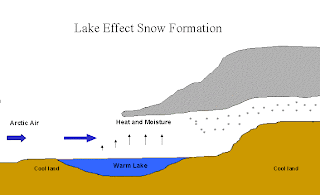One of the largest cities in the United States also happens to be a part of a fluvial landscape. The Chicago River that runs through the middle of the city has played a vital role in the building and expansion of the city itself.
The city built itself with access to the river. Today some of the largest buildings meander with the river.
The Chicago River is a perennial river; meaning it flows year round, however it does not flow at a very fast rate which does not allow heavy sediment to move very quickly. As I stated, Chicago was built around this river, from streets to buildings the city has transformed itself, along with the river. Concrete banks follow the river to support the structures; however like we discussed throughout class, the river will eventually begin to erode the concrete and change the structure of the river itself. This can lead to the collapsing of the concrete banks, causing a problem for the buildings, bridges, and streets build so close to the river.
Chicago will have to deal with the breaking down and erosion of the rivers concrete banks in order to protect the structures and roads that follow the river.
In my second blog I discussed how the major flooding of the Chicago River emptied unsanitary waste, causing the closure of Lake Michigan and the river. The problem of unsanitary waste flowing through the river has caused Chicago to restructure the river over time. Throughout the 1800’s and early 1900’s the river was used to rid the city of sewage, pouring pollution directly into Lake Michigan. Many Chicago residents became ill and died because of the unsanitary river. This led Chicago to reverse the flow of the river through the creation of the “Sanitary and Ship Canal,” in 1900. The canal used locks to reverse the flow of the river to keep unsanitary water out of Lake Michigan; at a higher velocity the river began to pump fresh water throughout the city.
The unsanitary pollution could be seen as a dissolved load, meaning the river carried the chemicals throughout the city spreading disease.
Without the use of the river, Chicago would not be what it is today. This fluvial landscape was left as a result of the melting of the Laurentide ice cap.
The melting of the glacial landform has transformed into one of the largest cities in the world!
-Jason Bolton
Sources:
Pictures taken from Bing Images
















